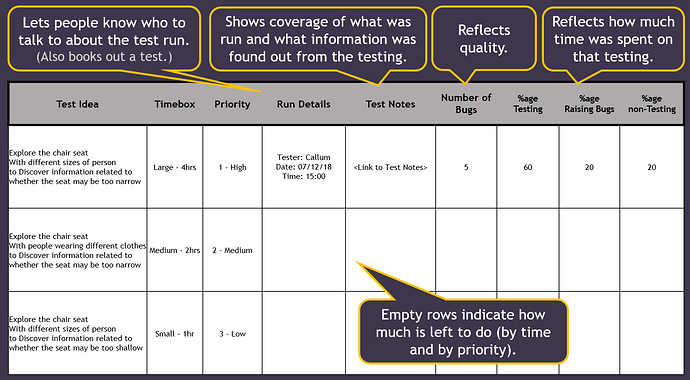Exploratory testing is using critical analysis and thinking to uncover and share information about a product, design or idea. That means unlike in scripted testing we don’t need a product to be able to start testing. We can start exploring ideas or designs as soon as we hear about them, questioning them to find out information that’ll shape how they’re thought about, designed and implemented.
Responsibility lies ultimately with the team, the team wants better quality of their products so they’re in charge of making sure that testing happens. As a tester in the team you might end up doing the testing (because you have the bests skills for it) and you’ll certainly champion quality, but the whole team is accountable for quality.
Note: That doesn’t mean only testers should be doing exploratory testing. I try to teach my team mates how to do it through pairing so that everyone can start finding more information about quality.
Tooling will depend upon what you’re testing but fundamentally you need anything that’ll help you explore and find information about the product and a way of taking test notes.
Test Notes: Google docs, Excel, XMind, TestBuddy, Screen recorders, Audacity audio, Pen & paper, PicPick screenshot grabbers.
Networking: Charles proxy, Dev Tools, Clumsy network throttling.
APIs: Dev tools, Postman, SOAP UI.
UI: Colour marketing psychology, Accessibility tooling (WCAG 2.1, Axe, WAVE, Lighthouse, A11y)
Back end: SQL readers, IDEs, GitHub.










